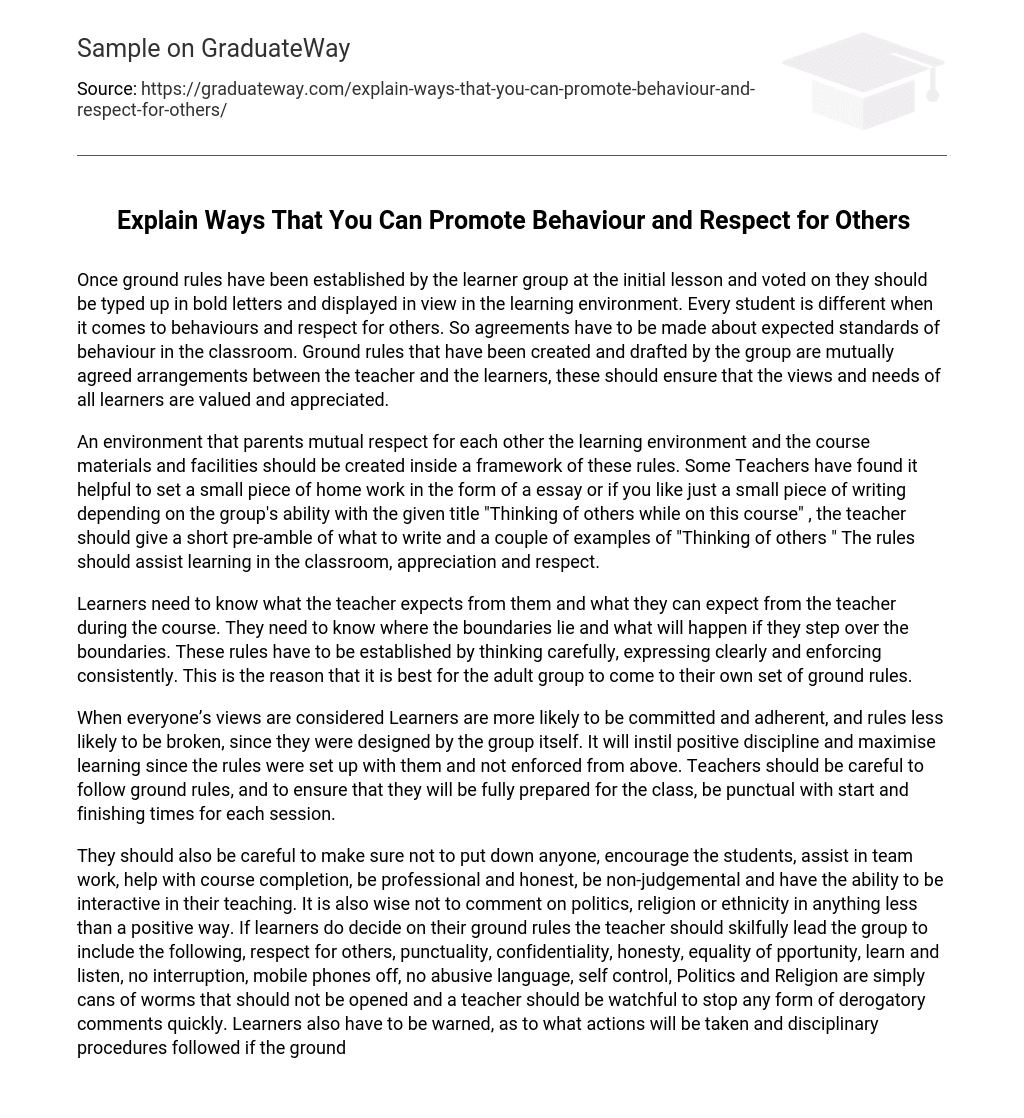Once ground rules have been established and voted on during the initial lesson, it is crucial to emphasize them by writing in bold and displaying them in the learning environment. Considering that each student possesses distinct behaviors and levels of respect towards others, it becomes essential to reach agreements regarding expected standards of behavior in the classroom. These ground rules are formed by the learner group and act as arrangements that both the teacher and learners agree upon together, guaranteeing that all learners’ perspectives and requirements are respected and appreciated.
An environment should be established within a framework of rules that encourages mutual respect among parents, the learning environment, and course materials and facilities. Some teachers have found benefits in giving a small homework assignment as an essay or short piece of writing, depending on the group’s proficiency. The assigned topic should focus on “Thinking of others while on this course,” with the teacher providing a brief introduction and several examples to illustrate the concept. These rules aim to foster learning, appreciation, and respect in the classroom.
To succeed in a course, learners must understand the expectations of both the teacher and themselves. They should also be aware of the consequences that will arise if these expectations are not met. The rules for the course should be established through careful consideration, effective communication, and consistent enforcement. This highlights the importance of adult collaboration in creating their own set of guidelines.
Considering all viewpoints, learners are prone to be dedicated and adhere to the rules. This is because the group itself created these rules, resulting in a greater sense of constructive discipline and maximizing learning. Teachers must ensure compliance with these guidelines and adequately prepare for each session, commencing and concluding promptly.
The teacher should be cautious not to criticize anyone and instead focus on supporting and encouraging students, promoting teamwork, assisting with completing the course, maintaining professionalism and honesty, being impartial, and engaging in interactive teaching. Additionally, it is advisable to refrain from discussing politics, religion, or ethnicity in a negative manner. If learners establish their own rules, the teacher should skillfully guide the group to include respecting others, being punctual, maintaining confidentiality, being honest, ensuring equal opportunities, actively listening and learning, refraining from interruption, turning off mobile phones, avoiding abusive language, and practicing self-control. It’s important for teachers to prevent any derogatory comments towards politics or religion and promptly intervene if necessary. Learners should also be informed about the consequences and disciplinary measures that will be implemented if the agreed-upon class rules are broken. These consequences may vary across different institutions.
Creating a secure and courteous setting is crucial for all participants to reap the rewards of the learning experience. A challenge that needs to be addressed is that certain Learners lack an understanding of proper conduct in an educational institution. In this case, the group and individual agreed guidelines should serve as the foundation for a contract.
The teacher may have to remind the individual about their agreement to these rules, the reason for these rules, and the potential “CONSEQUENCES” of breaking them. In my opinion, a teacher should promptly enforce consequences after two violations to maintain respect for the rules and from other learners. It is important for teachers to ensure that the individual fully understands the rules, their purpose, and that they were collectively established by the group in which the individual participated.
The challenge for PTTLS learners in navigating the complex and politically correct world of the modern learning environment is to find clear guidelines for assessing and guiding their own behavior and that of their learners. However, there is one learning academy, Bradford Academy, that has been bold enough to publish a specific list of dos and don’ts in recent years. They have created excellent policy documents for colleagues and learners that promote the use of contemporary language. In my opinion, their document on promoting positive behavior is essential for any PTTLS learner. I have included a copy of it with this assignment.





